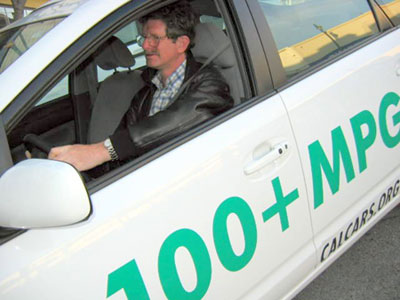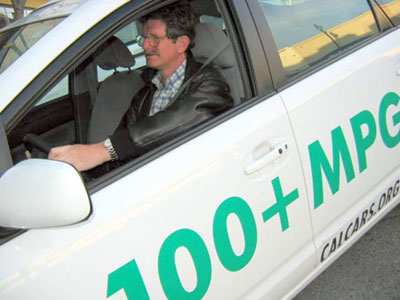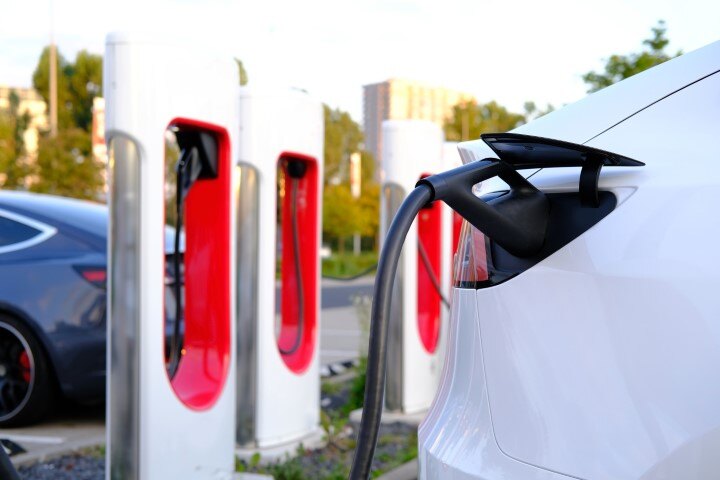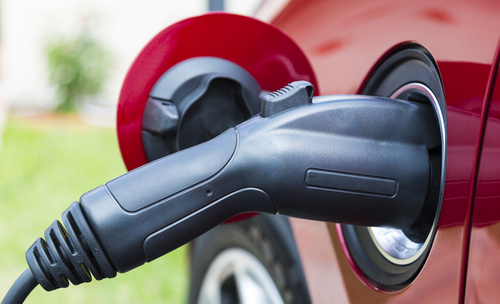More gas mileage advice from the Hypermilers
We all love to get the most gas mileage we can. But then there are the "hypermilers", who consider it a challenge and a contest to see who can get...

 Rising gas prices have created a small but diehard group of people who called themselves the "hypermilers". They like to stretch the limits of how high gas mileage they can achieve. Some of lessons they've learned can help us all save gas and save money.
Rising gas prices have created a small but diehard group of people who called themselves the "hypermilers". They like to stretch the limits of how high gas mileage they can achieve. Some of lessons they've learned can help us all save gas and save money.
Hypermiling - the "act of driving a vehicle using techniques that maximize fuel economy" really started to take hold among some people in a serious fashion in the 2000s, when oil prices shot up and gas prices followed. People got a lot more serious about conserving fuel when gas reached $3.00 or $4.00 a gallon than when it was $1.15.
Serious hypermilers have been known to reach astounding fuel efficiency heights. Every year in Elkhart, Indiana, is held the Maximum Fuel Economy contest on a special 16 mile course. The world records set there range from 216 mpg for the Honda Insight, 136 mpg for a Prius and 76 mpg for the Ford Escape. Yes, that's right. 216 miles per gallon.
Obviously not everyone gets 200+ miles per gallon. But it's not uncommon for amateur hypermilers to get 50% better mileage or more. And that's good news for the rest of us because it means there are things we can learn from them on how to improve gas mileage that can save us all sizable chunks of cash on our gas bills.
Common practices by hypermilers are ones we would divide into "mechanical alterations" and "driving behaviors". The mechanical changes to vehicles are ones we wouldn't expect anyone but the diehard gearheads to undertake. Those are things like installing an engine block heater (to save gas during startup), making aerodynamic changes to the car (most of us wouldn't have a clue how to do that) and altering the drive train to make it more efficient (again, few of us would even think to attempt that).
But beyond these more-skilled changes, what are some of things hypermilers do that the rest of us can imitate and save gas with?
By this, we mean inflate the tires to the maximum recommendation listed on the sidewall of the tire. You don't want to go above that figure because of safety concerns. Having higher tire pressure saves gas by reducing the rolling resistance on the road. The biggest thing you'd want to pay attention to is whether you live in an area that gets a lot of rain. Max-inflated tires respond a little less well in the rain (because there's less tire on the road), so if you live in an area like Seattle where it rains a lot, you'd want to be more careful.
 This is a big gas-saving practice and also probably the one that's most difficult for a lot of us. We want to get where we're going and we want to get there yesterday. For many of us, that means speeding. But the faster you go above 60 mph, you spend upwards of 20 cents per gallon in extra cost for every 5 mph you exceed that threshold. 55 mph is the optimal tipping point between getting there quickly while getting the best mileage. But you can get even better gas mileage below this. Just don't stay in the fast lane of the highway while going 35 mph.
This is a big gas-saving practice and also probably the one that's most difficult for a lot of us. We want to get where we're going and we want to get there yesterday. For many of us, that means speeding. But the faster you go above 60 mph, you spend upwards of 20 cents per gallon in extra cost for every 5 mph you exceed that threshold. 55 mph is the optimal tipping point between getting there quickly while getting the best mileage. But you can get even better gas mileage below this. Just don't stay in the fast lane of the highway while going 35 mph.
Dehard hypermilers install real-time fuel consumption monitors; they don't rely on other things like the on-board computer. These real-time gauges are not expensive and give you accurate data on how you're doing, right in the moment. Hypermilers are competitive with themselves - they want to check gas mileage during every trip. A fuel mileage gauge helps them do that. Having an inexpensive one installed on your vehicle can really help you figure out how your actual driving habits make you more or less fuel efficient. And as GI Joe once said in the cartoon, knowing is half the battle.
Pulse and glide is a practice where you turn off the ignition and coast. It's easier to do this on the highway. But pulse and glide is illegal in some states because in some vehicles, the ignition controls some elements of the brakes and power steering. You never want to be unsafe. That's why we would recommend a different practice of using the neutral gears to coast. You shift the car into neutral during stretches where you know you won't have to stop. The car doesn't burn gas while it's in neutral. When you slow down enough, you shift back into gear and pulse the gas to get back up to speed. The gas-saving advantage is that the vehicle isn't constantly burning gas to keep you up to speed. Over time, this saves fuel and money.
We mentioned this before in an earlier blog post on saving gas. The more your car weighs, the more gas you burn. Take out unnecessary items like ice coolers or whatever you have in there. The amount of gas you can save depends on how much weight you lose.
 This tip comes with a caveat. If you watch racing, you know that the practice of drafting involves driving behind another vehicle so as to take advantage of the aerodynamics push that give. The vehicle in front is the one cutting through the air, which passes over the front vehicle and then drops down some distance behind. Somewhere behind that front vehicle is a space where wind resistance is very low, and if you drive in that space, you save fuel because your vehicle isn't working as hard cutting through the air.
This tip comes with a caveat. If you watch racing, you know that the practice of drafting involves driving behind another vehicle so as to take advantage of the aerodynamics push that give. The vehicle in front is the one cutting through the air, which passes over the front vehicle and then drops down some distance behind. Somewhere behind that front vehicle is a space where wind resistance is very low, and if you drive in that space, you save fuel because your vehicle isn't working as hard cutting through the air.
The disclaimer about this practice is that it can sometimes be dangerous. You never want to tailgate or drive too close to the vehicle in front of you. Bell Performance would never advocate that practice.
But you can adopt similar practices that are safer and give you some gas-saving boost. If you're on the highway, try to slip behind a caravan or line of vehicles, especially trucks. When a line of vehicles is driving together, it creates a wind tunnel that you can take advantage of. It's even better when it's multiple big-rigs doing this. Just don't be unsafe and follow too close.
There are many more tips from hypermilers that will save you gas. We'll revisit the topic from time to time, as there is much more to be learned. Until then, see if adopting any of these tips helps your bottom line gas budget.

We all love to get the most gas mileage we can. But then there are the "hypermilers", who consider it a challenge and a contest to see who can get...
.jpg)
One thing not helping hybrid sales is consumer uncertainty about just how much gas mileage they are actually getting. When considering a hybrid,...

Twitter is great for catching breaking news. We were looking on Twitter today and there are numerous references to a new report by Consumer Reports,...